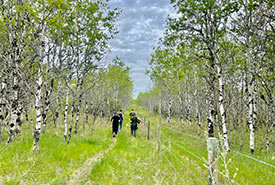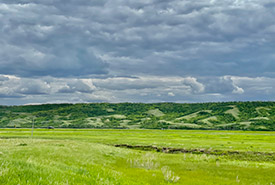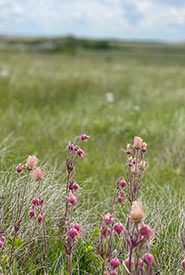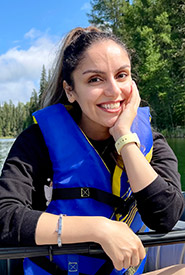Four months of working for nature: The story of an NCC summer intern

Asquith, SK (Photo by NCC)
My name is Mahla, and the “H” in the middle of my name is pronounced, which is a challenge for most people in Canada, including my Nature Conservancy of Canada (NCC) colleagues. My colleagues' effort to learn the pronunciation of my name made me feel welcomed as a new intern at NCC.
I studied urban and regional planning in my home country of Iran and my master’s thesis was about sustainable development, which is defined as “development that meets the needs of the present, without compromising the ability of future generations to meet their own needs.” One of the three types of sustainable development is environmental protection, which is encompassed in NCC’s purpose to build a thriving world with nature. I believe that an inner voice of valuing and caring for nature is in the character of all people, we just need to listen for it. This summer I was fortunate to be a part of the biggest nature conserving family in Canada as a GIS intern in Saskatchewan.
As a GIS intern, I spent almost all my time at my desk, working with spatial data and providing technical support for staff in the field. I was lucky that staff in Saskatchewan had a gathering two weeks after I started my position. It was the first gathering since the start of the COVID-19 pandemic, so almost all the staff attended for dinner, and it was a great opportunity for me to meet all of them at the beginning of my internship.
The following day, we went for a hike on NCC’s Asquith project, west of Saskatoon, and it was my first experience visiting one of NCC’s projects. This flat, grassy natural area has sporadic patches of beautiful aspen forest, and the weather was cloudy, so everything was perfect in making it a wonderful day.

Fairy Hill, SK (Photo by NCC)
My second experience in the field happened on the Fairy Hill project along with many staff who were there for field work training. This visit was also my first introduction to range health assessments, which was very informative for me. Before that, I thought that grass was just grass — the simplest plant in the world! However, in the health assessment training, I learned there are many different types of grasses, all with distinct characteristics but that grow next to each other. I gained a new appreciation for the botany courses required to gain enough knowledge to identify the different types of grasses.

Prairie smoke growing on Fairy Hill, SK (Photo by NCC)
Fairy Hill has extensive native grassland that consists of grasses and sky, and just this! The extent of the sky in Fairy Hill is incredible! I think the sky at night would be amazing, as there is very little to no light pollution. Also, I have seen photos of the wonderful night sky at OMB, where you can see many stars and even the Milky Way galaxy at night. I hope that I can visit there soon and enjoy watching the sky all night.
This is my story from my summer as an intern at NCC in Saskatchewan. Even though I spend most of my time at the desk and not in the field, I know that the GIS work I do is helping to conserve natural habitats, like native grassland, in Saskatchewan. I greatly appreciate the opportunity to have a small role in protecting nature! Thanks to everyone who helped and taught me along the way, especially Sarah Ludlow and Matthew Braun, who were so patient and supportive. I hope to be a part of the NCC family again.
To quote Jane Goodall, “The least I can do is speak out for those who cannot speak for themselves.” I am calling on all of you on behalf of nature — please protect and save nature for yourselves and those who come next on this planet!


